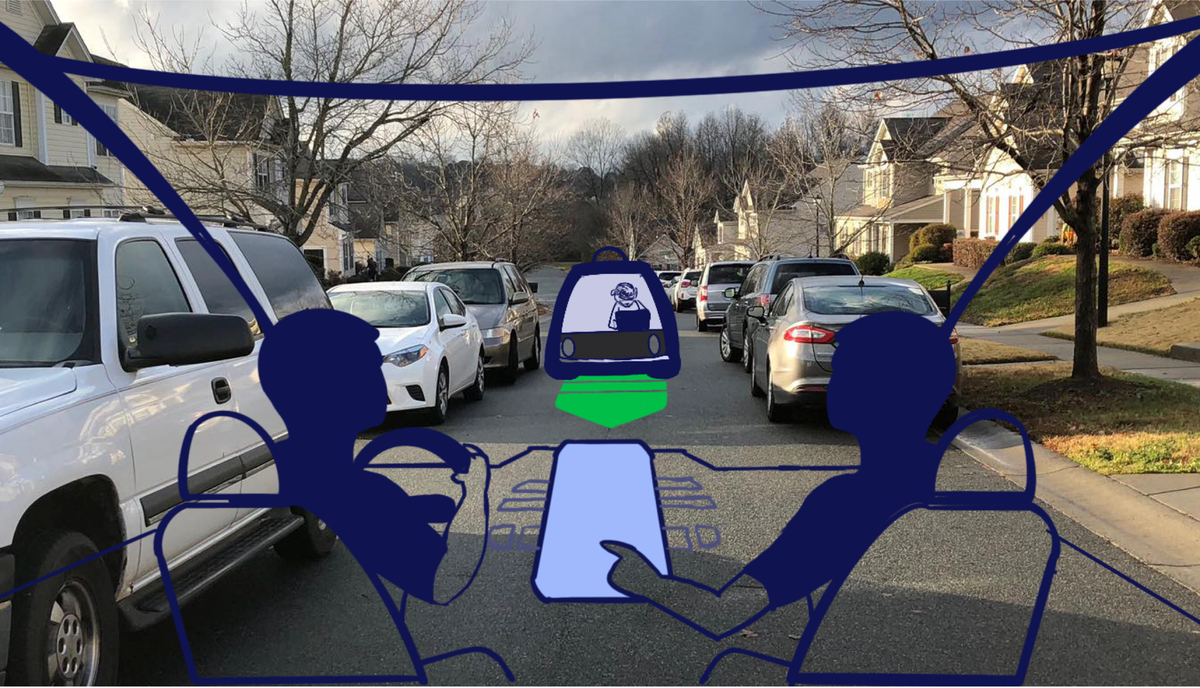Autonomous Vehicles Drive into Ambiguous Urban Road: Design of HMI-based Communication Methods Focusing on Manually Driven Vehicle Drivers
- Projektbeteiligte:
Dr. Hailong Liu, researcher from Graduate School of Informatics, Nagoya University, Japan; Dr. Hao Cheng, researcher from Institute of Cartography and Geoinformatics, Leibniz University Hannover, Germany.
- Starttermin:
15.07.2021
- Endtermin:
31.12.2021
Remote Collaboration Program, Support by Karlsruhe House of Young Scientist (KHYS), KIT
With the development of autonomous vehicles (AVs), our traffic environment will be populated with a mixture of AVs and human traffic partners (HTPs) such as pedestrians, cyclists, and manually driven vehicles. However, a driver-less AV lacks some explicit communication methods when they negotiate with HTPs in the unclear right-of-way urban traffic scenarios, which brings new challenges to safety, efficiency, trust, and pro-sociality. To solve this problem, HMI-based communication methods could be seen as potential solutions to integrate AVs seamlessly into ambiguous scenarios. Compare to the studies of AV-pedestrian communication, rarely literature reported AVs - manually driven vehicles’ driver communication. I focus on the deadlock situations in which negotiation is necessary. Novel HMIs will be proposed considering the complexity of situations, cooperative roles, and cultural background. For supporting build eHMI guidelines and developing a safe, efficient driving scenario, thus improve the acceptance of AV in the urban traffic environment.
Mit der Entwicklung von autonomen Fahrzeugen (AVs) wird unsere Verkehrsumgebung mit einer Mischung aus AVs und menschlichen Verkehrspartnern (HTPs) wie Fußgängern, Radfahrern und manuell gesteuerten Fahrzeugen bevölkert sein. Allerdings fehlen einem fahrerlosen AV einige explizite Kommunikationsmethoden, wenn es mit HTPs in den unklaren Vorfahrtsszenarien des Stadtverkehrs verhandelt, was neue Herausforderungen für Sicherheit, Effizienz, Vertrauen und Prosozialität mit sich bringt. Um dieses Problem zu lösen, könnten HMI-basierte Kommunikationsmethoden als potenzielle Lösungen angesehen werden, um AVs nahtlos in unklare Szenarien zu integrieren. Im Vergleich zu den Studien zur AV-Fußgänger-Kommunikation wird in der Literatur selten über die Kommunikation zwischen AVs und manuell gesteuerten Fahrzeugen berichtet. Ich konzentriere mich auf Deadlock-Situationen, in denen eine Verhandlung notwendig ist. Es werden neuartige HMIs vorgeschlagen, die die Komplexität der Situationen, die kooperativen Rollen und den kulturellen Hintergrund berücksichtigen. Zur Unterstützung des Aufbaus von eHMI-Richtlinien und der Entwicklung eines sicheren, effizienten Fahrszenarios, um so die Akzeptanz von AV im städtischen Verkehrsumfeld zu verbessern.


